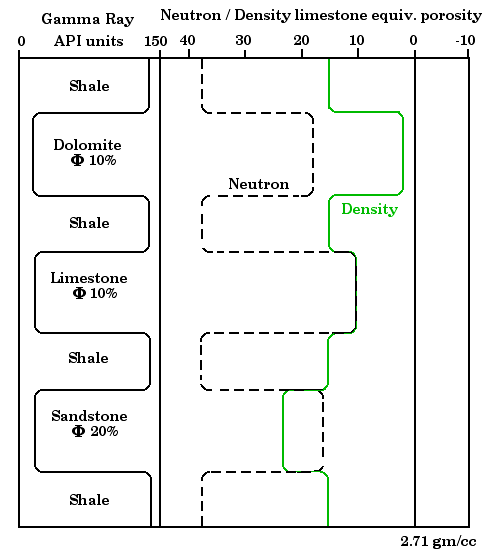

The gamma-ray log generally allows a basic distinction of shales from non-shales but is not usually diagnostic of the rock type in hydrocarbon reservoir or aquifer formations. Neutron and density logs are used to evaluate porosity in these units but are also affected by the neutron moderating characteristics and densities of the formation minerals. By overlaying the two logs on a common reference scale, a true volumetric porosity can be estimated and the formation lithology interpreted. A scale of equivalent limestone percentage porosity is the most commonly used reference because limestone is intermediate in its neutron-density properties between sandstone and dolomite.
A hypothetical overlay is shown of neutron and density logs for some common reservoir lithologies and a shale in the figure. Shales show a high gamma-ray reading, a high neutron reading, and a moderate density reading. Limestones generally have a low gamma-ray value, and a coincident density and neutron response, because of common calibration to an assumed limestone porosity scale. Dolomites have a low gamma-ray value, a relatively low density porosity (because the grain density of dolomite is higher than calcite) and a relatively high neutron reading (because the neutron moderating character of dolomite is higher than calcite). Sandstones have a low gamma-ray value, a relatively high density porosity (because the grain density of quartz is less than calcite), and a relatively low neutron reading. The true, effective porosity of shale-free zones in the reservoir lithologies is approximately midway between the two extremes of the neutron and density porosities.